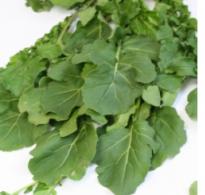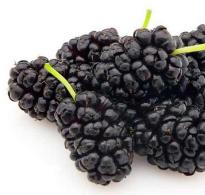Fragrant osmanthus: what it is, what it smells like, beneficial properties. Green tea with osmanthus - benefits and harms of Osmanthus - what does it smell like in perfumery?
How much do osmanthus flowers cost (average price for 1 pack)?
Moscow and Moscow region.
The beneficial properties of osmanthus or the evergreen plant Osmanthus from the Olive family were the first to be used in traditional folk medicine by the people of China. Over time, osmanthus flowers and the essential oil of the plant have earned the reputation of effective medicines. In addition, decoctions prepared from the rhizome and stems of the plant are used for medicinal purposes.
Currently, there are about 30 different species of osmanthus, which grow throughout the tropical climate of Asia. In addition, osmanthus grows on the American continent and the Caucasus. China, as well as Japan and the Himalaya region, are considered the birthplace of osmanthus. Osmanthus is a shrub that rarely exceeds 10 meters in height.
Osmanthus flowers are actively used in the food industry as a flavoring and aromatic additive. Most often, osmanthus flowers, due to their distinctive aromatic abilities, are used as natural flavorings for drinks, mainly teas. It is believed that osmanthus flowers are ideal as a flavoring agent for red, dark, and also black oolong teas.
Benefits of Osmanthus
Thanks to the properties of osmanthus, the flowers of the plant stand out with the unforgettable aroma of ripe peaches or apricots. In order to preserve the unique natural properties of the plant, osmanthus flowers are dried. As mentioned earlier, there is a unique benefit of osmanthus for the human body, which is expressed in the general strengthening properties of the plant.
In addition, the benefits of osmanthus lie in the chemical composition of the plant. Osmanthus contains a large amount of valuable essential oil, the composition of which is complex and contains a significant amount of compounds that are certainly beneficial for the human body. The aroma of osmanthus can invigorate and lift your spirits in a matter of seconds.
Osmanthus is often called a plant that charges the human body with energy. Osmanthus essential oil is actively used in aromatherapy and folk medicine in Asian countries. Osmanthus brings invaluable benefits as a cosmetic product. Osmanthus essential oil, as well as decoctions from the rhizome, flowers and stems of the plant, are used in the treatment of certain diseases of the skin of the human body.
Osmanthus has a beneficial effect on human skin, moisturizes and nourishes its deep layers, thereby preventing premature aging. With regular use, osmanthus essential oil helps restore the healthy appearance and beauty of the skin.
In addition, osmanthus has sedative properties, as well as the ability to stabilize blood pressure. Thanks to its distinctive biological parameters, a plant such as osmanthus has found application in the food, cosmetic and pharmaceutical industries.
Calorie content of osmanthus flowers 0.1 kcal
Energy value of osmanthus flowers (Ratio of proteins, fats, carbohydrates - bju):
: 0 g (~0 kcal)
: 0 g (~0 kcal)
: 0 g (~0 kcal)
Energy ratio (b|w|y): 0%|0%|0%
In the East, osmanthus flowers are called sweet gold for their complex, delicate, spicy aroma, combining the smells of stone fruits and high-quality leather. The exquisite fragrance of planting blooming osmanthus can be felt from a distance of more than a kilometer. In the homeland of this culture, in China and Japan, many fairy tales and legends are associated with this plant. With proper care, growing osmanthus is possible at home, as well as in the gardens of southern regions with warm, mild winters.
General description with photo
Osmanthus is classified as a member of the Olive family, its name from Greek literally translates as “fragrant flower”. China has its own version of the name for this plant - kinmokusei; you can also often hear the name “tea” or “fragrant olive”. In addition to China and Japan, you can find osmanthus in the wild in other countries of East Asia, while in Nepal it grows high in the mountains, some of its thickets are found at an altitude of up to 3.5 km. But this fragrant shrub is especially revered in China, where it has been cultivated for more than 2000 years and is considered a symbol of the Moon Festival. The petals of its flowers are brewed into tea, which is considered a rejuvenating drink.
The plant is a tall shrub that can grow up to 8 m or more. Some species can develop into a tree form as tall as a 3-4 story house. When grown at home, its size, of course, looks much more modest. The leaf blades of the plant are leathery, shiny, often have a jagged, sometimes prickly, sometimes smooth edge, and are arranged in opposite order. Flowering of osmanthus occurs in waves, gaining strength and fading again, mainly in the cold half of the year, starting with the onset of autumn and continuing until April, and sometimes until May.
The flowers themselves are four-leafed, small, not very decorative, collected in a corymbose, loose inflorescence and often colored white or beige, but sometimes yellow or orange. They have a strong odor reminiscent of the aroma of stone fruits - apricot, peach, dried grapes.
At the end of flowering, a hazelnut-sized drupe fruit ripens in place of the flower. Inside the seed there is one seed, covered on the outside with an ultramarine, dark purple or purple skin.
Types of osmanthus with photos
Of the 36 known and described varieties of osmanthus, only one is found outside the Eurasian continent and the island states of Oceania - in the southeastern United States. The species is called American. Let's take a closer look at the varieties suitable for breeding in Europe.
It is an evergreen shrub, reaching 8 meters in height in natural conditions with large shiny leathery leaves with a clearly defined central vein, leaf length is about 5 cm. Young specimens have light green foliage with a contrasting pink border. Older specimens change the edge color to beige or cream. This species blooms with white quatrefoils, in place of which oval stone fruits of a rich purple color ripen.
One of the hybrids obtained on the basis of osmanthus varifolia (pictured) can be confused with another plant - holly, due to the similar configuration of the leaf blades. It is a hybrid of "Futurae", which is why it is called false holly.

The best varieties of osmanthus for growing at home are “Latifolius”, “Minrix” and “Fudingzhu”.
The variety is an evergreen shrub plant, reaching a height of 3-6 m in nature, with a neat and compact crown. It has hard leaves with jagged sharp edges. Their location is opposite. The stems are branched and strong. The flowers are small, have a four-lobed funnel-shaped corolla, collected in paniculate lush curly inflorescences. Flowering occurs after the autumn temperature drops below +20C. It has a very strong aroma that can be felt at a considerable distance from the flowering bush.
This variety has many artificially bred varieties and hybrids, here are just a few of them:
- "Apricot gold" - the flowers are golden-apricot in color.
- “Butter Yellow” - the petals of the inflorescences have a soft fawn color.
- "Aurantiacus" - pale orange inflorescences.
- "Orange Supreme" - blooms with bright orange buds.
- "Fortune" is a hybrid created on the basis of fragrant and variegated varieties. It is an evergreen shrub no more than 7 m tall. Flowering shoots are practically devoid of leaves. All foliage is concentrated at the base of the branches. The paniculate inflorescence contains 6-8 small fragrant buds. The hybrid was bred for keeping in cool greenhouse conditions.
Fragrant osmanthus is a medicinal plant widely used in oriental medicine.

Osmanthus armed
Forms a dense bushy crown with fragrant flowers that bloom in early autumn. The shoots are light gray in color, the leaves are dark green, elongated, with sharp jagged edges. The crown of an adult plant has an almost spherical shape, the maximum height in nature is up to 4 m. At home, a 5-year-old bush usually grows up to 1 m.
Osmanthus Burkwood
Spring flowering is characteristic of this species. Short-tubular buds are collected in small inflorescences. The variety is characterized by slow growth and dense bushiness. It is a hybrid obtained by crossing the basic varieties of decorated and delavaya.

Osmanthus decorated
It has olive green leaves with a narrow elliptical shape. The edges of the leaf plate are smooth and even, without serration. On the reverse side the leaves are lighter, with a slight yellowish tint, up to 1.5 cm long. The fruit-nut is dark purple, almost black. The size of the spherical crown is about 1 m in circumference for a 5-year-old specimen.
Osmanthus Delavaya
A compact branched bush with fragrant flowers that have an elongated shape with bent petal blades. It blooms in spring, after which it produces blue-black, small, broadly ovoid fruits.
The leaves are hard, finely toothed, no more than 2.5 cm long. Adult specimens do not exceed 0.6 m in height.

Growing osmanthus in open ground
As already mentioned, this fragrant shrub can only be grown outdoors in warm, snowless winters. In the garden, you need to choose slightly darkened and well-protected areas from the wind with a sufficient amount of soft, diffused lighting. The plant normally tolerates dense shade, but its decorative effect is lost. The crop is not demanding on soil quality, but if possible, it is better to choose neutral, slightly acidic soils. The acceptable pH range is from 5 to 7 units. Osmanthus demonstrates the most productive growth and development on nutritious loams. The site must have measures for high-quality drainage of excess water.
Group plantings provide a distance between bushes of about 120 cm, however, in the end it all depends on the variety and crown volume of adult plants. Young, recently planted specimens require regular moderate watering. In the future, osmanthus will have to be watered only during periods of summer drought.
For outdoor osmanthus, it is recommended to use universal formulations of complex fertilizers, which should be applied twice per season. To provide long-term feeding, you can use mature compost as mulch to cover the root circle.
Growing in a container
Caring for osmanthus at home involves growing it in a roomy, preferably wooden tub, with high, coarse-grained drainage at the bottom. It is recommended to use a ready-made composition for decorative leafy indoor crops as a substrate. The plant will feel comfortable next to a window behind a curtain. It is not recommended to place it on the windowsill even at a young age.
Osmanthus prefer cool conditions at a temperature of +18...+22C, which should be reduced during flowering and not exceed the threshold of +20C. The best flowering can be achieved by keeping it in winter at a temperature of +10...+15C. During this period, it is enough to water the bush once a week. In general, watering is regulated based on the conditions of detention. It should be moderate, but not allowing the soil ball to dry out completely. In the summer, at high room temperatures, regular spraying or installing a tray with water under the crown is necessary. Indoor osmanthus specimens are fertilized with complex compounds with a predominant content of iron and sulfur. The plant is also very responsive to the addition of organic matter.

Feeding with complex compounds for flowering plants during the period of bud formation will make flowering even more lush and fragrant.
Reproduction
Growing osmanthus from seeds at home is not practiced due to the technical complexity of the process. Even high-quality stratification does not guarantee seed germination. In industrial conditions, seed undergoes a special cycle of measures to awaken it by treating it with acids or alternately changing precisely selected temperature conditions. The period of seed germination can take from six months to 18 months.
Cuttings
It is recommended to harvest cuttings in August. At the same time, they should not be cut with a sharp tool, but it is best to break them out with a “heel”. These can be stem or apical shoots 10-12 cm long. Treatment with a growth stimulator will speed up rooting. The cuttings are placed in a peat-sand substrate, after which they are provided with greenhouse conditions, which, along with regular watering, will ensure the appearance of young roots 2-3 weeks after planting.
Reproduction by layering
The flexible shoots of the lower tier of the osmanthus bush can be buried in the ground and wait for them to take root. Selected shoots are completely freed from leaves, the bark at the point of contact with the ground is cut with a sharp knife for faster root formation. For convenience and reliability, you can tie the shoot at the site of future rooting to a peg that is driven into the ground. The soil where the shoots come into contact with the ground should always be moist.
When planting a side shoot horizontally, you can get several growth points at once and, therefore, more planting material. It is advisable to plant new specimens in a permanent place in early spring next year.
Osmanthus is widely used in perfumery due to its subtle and complex aroma. On sale you can find perfumes made in France with the same name.
The benefits and harms of osmanthus
The plant has a wide range of medicinal properties, in addition to its aromatic effects. The most effective medicinal form is a decoction obtained from the flowers of the plant. No wonder tea based on them is considered a miraculous rejuvenating drink in China. In addition to the antioxidant effect, osmanthus flowers have an expectorant, cough softening effect, reduce the level of bad cholesterol in the blood, help with persistent diarrhea, and rinses based on a decoction of the plant treat stomatitis and other inflammatory diseases of the oral cavity. It has been proven that the flower decoction of the cultivar helps eliminate hangover syndrome.
The plant is a natural antiseptic and analgesic, tones and invigorates, so drinking green tea based on its flowers has significant benefits for the general condition of the body.
Osmanthus is used in cosmetology, medicine, cooking and perfumery. In China, the flowers of the fragrant plant are used to flavor black and green tea. The drink helps restore strength and renew the body. From essential oils, plants produce sweet perfumes that have a subtle fruity aroma. Osmanthus contains vitamin C, calcium and magnesium. The stems and bark are brewed to treat diseases. The plant is effective for nervous pathologies of the cardiovascular system.
Description
Osmanthus is an evergreen deciduous plant that belongs to the genus Oleaceae. In China, the fragrant flower is called kimonkuseya, or tea olive. Ornamental shrubs range from 13 to 36 species. Fragrant osmanthus is used in medicine, gardening and cosmetology. The small tree reaches a height of 2 to 12 m. The shiny leaves of the plant have a dark green tint and jagged edges. Osmanthus buds are collected in inflorescences that emit a pleasant aroma. The plant smells like fruit (with notes of apricot and peach). Flowers come in white, yellow, red or red. They bloom from September or October and persist until the end of winter.
In the natural environment, kimonkusei grows up to 18 m, and at home - up to 2 m in height.
Properties
Due to its healing properties, the plant is used in folk medicine. A decoction of osmanthus bark helps in the treatment of boils, carbuncles and whooping cough. Tincture from the roots is effective for women's diseases, bruises and gum diseases. The fragrant plant lowers cholesterol and blood pressure. In folk medicine, osmanthus is actively used to eliminate the symptoms of atherosclerosis, obesity and hypertension. For this, not only bark and roots are used, but also flowers. They contain substances that remove phlegm and eliminate cough. The buds are brewed as tea and consumed to prevent viral and colds.
The plant contains essential oils: geraniol, linalool and ionone derivatives. They have a beneficial effect on the nerves and heart, speeding up metabolism and purifying the blood.
Osmanthus is used in cosmetology to care for problematic and aging skin. The plant extract has soothing, nourishing and anti-inflammatory effects. Cosmetic preparations containing osmanthus eliminate rashes. At the same time, the plant extract moisturizes and nourishes the skin, preventing it from drying out. The regenerating properties of the raw material contribute to the natural restoration of all layers of the dermis.
Osmanthus essential oils are used in perfumery. The perfume has a sweet aroma with fruity notes.
The plant has a beneficial effect on the hair structure. An effective remedy for brittle and damaged curls is osmanthus essential oil. It restores the oil balance of the scalp, nourishes it and heals scratches and wounds. If it is used regularly, the hair structure is restored in a few weeks. Essential oil is used to prepare cosmetics for the face, body and hair. It is used in aromatherapy as a sedative and anti-inflammatory composition. There are contraindications to the use of essential oil:
- age up to 6 years;
- pregnancy.
Osmanthus tea has a positive effect on the body. It has a pleasant exotic aroma. The benefit of the healing drink is that it gives strength, vigor and confidence. Dried inflorescences of the plant are consumed with tea leaves or separately. The drink has a tonic, antisclerotic and antiseptic effect. Healthy tea removes toxic substances from the body and provides reliable protection. It is used to increase immunity and normalize the functioning of the pancreas.
Green tea with osmanthus
The drink increases concentration, strengthens the immune system and improves the functioning of the digestive system. Green tea is calming and relaxing, while osmanthus provides a floral aroma. The product is used to prevent colds.
Osmanthus. During its flowering, the aroma spreads far. The plant itself is not yet visible, but its sweet fruity smell is already felt. Small osmanthus flowers cannot compare in their beauty with others, more common and famous on the planet, but its exquisite and delicious aroma captivates everyone who has ever smelled it.
Osmanthus is an evergreen deciduous tree that belongs to the olive family, growing in tropical regions of Asia. The plant comes in several types, so in some places it grows as a shrub, and in others as a small tree. Osmanthus is considered a rare plant; its flowers, collected in clusters, differ in color and strength of fragrance. There are silver-white, golden-orange, and even reddish inflorescences. In Asia, osmanthus is called fragrant olive.
And in China they express special respect for this plant. Osmanthus is the emblem flower of the city of Hangzhou. At the same time, it is used to flavor tea, which helps with colds, mainly coughs. Osmanthus flowers are also used to make fragrant jam.
There are many legends and traditions associated with this noble plant. In Taiwan, almost every wedding is held with osmanthus flowers, because they are the personification of fidelity and love. Osmanthus flowers are also an indispensable part of the Chinese Moon Festival, which is celebrated in September, that is, at the time when the tree begins to bloom.
Zhongqiu - this is the name of this holiday, or mid-autumn, celebrated annually on the 15th day of the eighth month according to the lunar calendar. In 2018, this event will take place on September 24. In Chinese culture, the full moon is a symbol of peace and unity between man and nature. This holiday is loved by all Chinese people. One of the traditions of this holiday is the unification of two loving hearts.
The celebration takes place over three days, which are considered weekends. Everyone goes to visit each other, attends festive events, and at home they bake mooncakes from lotus and sesame seeds. Each part of China has its own recipe for making mooncakes, which also have their own history. But now we are talking about osmanthus. The flowers of this plant add their sweet aroma to prepared treats.

Osmanthus for health
Osmanthus is also used in medicine; its medicinal properties were described by Avicenna. In addition to treating coughs, skin abscesses are treated with a decoction of osmanthus stems, as it has an anti-inflammatory effect, smooths out scars on the skin, and stabilizes blood pressure.
The smell of osmanthus flowers gives joy, energizes and is an excellent depressant. Osmanthus absolute is valued on a par with tuberose and neroli absolutes. Its scent, fresh and very fragrant, is considered one of the most delicious and aromatic notes, creating a juicy peach-apricot sound that gives the composition depth and sensuality.
Aroma in perfumery
Osmanthus has long been included in the main components of perfumery; it occupies a place of honor both in the heart of the fragrance and in the trail. It is used in the form of an absolute, which is obtained from a plant that has golden-orange flowers. Osmanthus absolute is a very expensive raw material, so it is used only in the most expensive perfumes.
The smell of osmanthus is compared by many to the smell of peaches, apricots and plums. All these fruity sweets create a velvety aroma with spicy notes of leather, as if sweet fragrant fruits were stored in a suede handbag. The smell of osmanthus is a delight that evokes joy and a feeling of happiness.

Perfumers use osmanthus absolute in floral, fruity and oriental groups, and call it “memory of a Chinese garden.” Osmanthus goes well with geranium, neroli, tonka bean, honey, rose, sandalwood, rosewood, benzoin and mandarin.
Serge Lutens Nuit de Cellophane
The aroma is unusual and very persistent, like all Lutens fragrances, created in 2009. Osmanthus is here at the very beginning of the composition, surrounded by a retinue of jasmine and citruses. It contains sparkles of juicy tangerine, honey drops of sandalwood, and notes of sweet almond. The aroma is reminiscent of the reflections of sunlight in stained glass windows.
The Different Company Osmanthus
The fragrance was created in 2000 by perfumer Jean Claude Ellena. Osmanthus plays a key role in it. The lightness and weightlessness of the aroma is complemented by shades of bergamot and tangerine, notes of delicate rose and fresh greenery. The entire fragrant composition is accompanied by the accompaniment of musk and rose. Such smells can be heard while walking through the Chinese gardens of Beijing. The composition contains mandarin, bergamot, green notes, osmanthus, jasmine and geranium. The base accords are musk and rose.

Jo Malone London Osmanthus Blossom
This sensual feminine fragrance, created in 2013, gives tenderness and awakens romantic feelings. The composition is built around the melody of osmanthus with its velvety shades and sweet honey-peach sound.

Hermessence Osmanthe Yunnan – Hermes
A wonderful fragrance for men and women, it belongs to the floral fruity group. The fragrance was released in 2005 by perfumer Jean-Claude Ellena. The aroma composition contains orange, tea, osmanthus, freesia, leather and apricot. The aroma creates a feeling of happiness, gives memories of childhood, in which apricot orchards grew, and the hot sun filled the fruits with sunlight and a unique sweet smell.
Sunshine Amouage
Another sunny scent reminiscent of summer, released in 2014. Even the bright yellow bottle evokes warmth and memories of hot sun rays. Sunshine is a scent that you want to breathe, very tasty and sweet, with apricot jam.
Sunshine is bright and at the same time gentle, cheerful. Osmanthus surrounded by noble companions gives a good mood. And the companions in the composition are worthy. These are soft and delicate accords of almond and davana, shades of black currant, osmanthus, jasmine, magnolia, vanilla. The woody base is made of tobacco, papyrus, patchouli and juniper berries. Sunshine can be called the elixir of happiness.
Bengal Lancome
The aroma of Benghal is like a sweet drink, delicate and attractive, a fruity-osmanthus haze that makes you want to dress up. Benghal is a feminine scent and lasts a long time. This is the scent of summer, light, carefree and cheerful. Released in 2006. The fragrance contains ginger, tangerine, apricot, osmanthus, jasmine, sandalwood and musk.
Osmanthus is an evergreen plant representative of the olive family. China is considered its historical homeland. It grows in the wild in tropical zones of Asia, the Caucasus, and North America. In Russia, osmanthus is grown using the greenhouse method in the south of the Black Sea coast. There are about 30 of its species. Fragrant osmanthus flowers are prized by the Chinese for their scent. They are used as a natural flavoring in various drinks, mainly for making tea. Due to its rich composition, the plant is widely used in oriental medicine.
Botanical description
Osmanthus grows in the form of shrubs or trees 2–10 m high. The leaves are oppositely distributed along the stem, simple, with carved edges, a glossy and hard green surface. The young bark is creamy green and darkens over time. Inflorescences are bisexual, collected in groups, paniculate type. The corollas are small, tubular, four-sexed, with stamens in the center. The shade varies depending on the species - from yellow-golden to white.
The flowers smell like a fruit cocktail.
Flowering is long-lasting: begins in September-October and ends at the end of winter. During the growing season, petals appear 2–4 times at short intervals. The fruit is an oval dark blue drupe with one seed inside. The plant propagates better by cuttings, since the seeds require preliminary stratification (stratification). The period of their emergence is 7-18 months.

Useful properties
The main aroma-forming components are ionone and teaspiran derivatives. The peculiarity of the plant is due to the high content of essential oil. Its chemical composition is complex, its main elements being beta-ionone, dihydro-beta-ionone, a mixture of linalool oxide isomers, phenethyl alcohol, geraniol and linalol. The flowers contain a lot of ascorbic acid, magnesium, calcium, phosphorus and other trace elements.
Osmanthus is widely used in aromatherapy and folk medicine in Eastern countries. The bark, roots and flowers of the bush are considered medicinal raw materials. Essential oil is extracted from flowers by extraction. In addition to its pleasant smell, the plant has therapeutic properties. It has the following effects on the body:
- anti-inflammatory;
- sedative;
- expectorant;
- antisclerotic;
- antiseptic;
- painkiller;
- tonic.
This is an effective remedy for colds, it improves mucus discharge, relieves spasms and inflammation of the throat, and makes breathing easier. The plant lowers bad cholesterol, cleanses and thins the blood. It is indicated for diarrhea, stomatitis, inflammation of the oral mucosa, colitis, gastritis and stomach ulcers, damage to the duodenum. Tea made from fragrant flowers is not only tasty, but also helps remove toxins and harmful waste products from the body.
For overweight people, this is an indispensable drink in their daily diet. The active substances in its composition start the process of burning fat and improve metabolism. Osmanthus decoctions and teas should be used for a number of gynecological diseases, disrupted menstrual cycle, heavy discharge and associated pain. This is an effective remedy for cystitis, it also relieves hangover. Thanks to its antiseptic properties, the plant copes with pain of any origin. Gargling with decoctions relieves bad breath.
Remedies from stems and roots are used in the treatment of:
- boils and carbuncles;
- whooping cough;
- rhinitis;
- bruises and hematomas;
- atherosclerosis;
- hypertension.
Herbal compresses relieve inflammation of the eyes. Essential oil, like all other parts of the plant, has a beneficial effect on the skin (moisturizes, nourishes). This promotes cell rejuvenation and prevents premature aging. With regular external and internal procedures, the result can be seen in the appearance of the skin.

For medicinal and cosmetic purposes, the plant is contraindicated for people with high blood pressure and epilepsy. Tea is not recommended for pregnant and lactating women, as well as small children. Essential oil should be used for external use only.
Osmanthus in other areas
Dried inflorescences are popular in oriental cuisine; they are added not only to tea. In China, a traditional aromatic infusion “gui hua cha” is made. Flowers serve as a food additive in various baked goods, sweet wines and juices, cakes, pastries and other desserts. Unripe osmanthus fruits are pickled, like olives. The Chinese love to prepare sweet porridge according to the national recipe from sorghum and millet and top it with jam from the flowers of the plant. The fruity taste goes well with green and black tea of any variety. Only white drink is not suitable for the mixture.
If you brew osmanthus yourself, you will need 3-4 g of dry inflorescences at a time. The water temperature should be between 90-95 °C. Exposure time - 3-4 minutes. It is not recommended to add flowers to expensive elite varieties of Chinese oolong and pu-erh teas aged 25 years.
The valuable chemical composition was also noted in cosmetology. Osmanthus extract is included in masks for problematic and aging skin. Cosmetic products with this ingredient are indicated for acne, increased sensitivity of the skin, and allergic reactions. Overdried skin becomes soft and silky, and the feeling of discomfort goes away. With regular use, fine lines and wrinkles disappear.

Essential oil is more valuable than the plant component because it gives quick and lasting results. It can be found in many cosmetic products for hair and face. Both in its pure form and in the form of masks, it quickly relieves inflammation and itching. Osmanthus essential oil is recommended in the treatment of dermatosis, furunculosis, and increased pigmentation. It effectively removes old scars, smoothes the surface, brightens, starts the natural process of regeneration of the skin epidermis, and restores tone.
Osmanthus is a universal plant representative. In addition to its medicinal and food uses, it is used in the perfume industry. Along with other essential oils, osmanthus is considered one of the best. Combines with the scent of rose, sandalwood, geranium. The plant is suitable for growing in greenhouses and indoor conditions. It attracts gardeners with its unusual leaves, small size and pleasant aroma during the flowering period.






